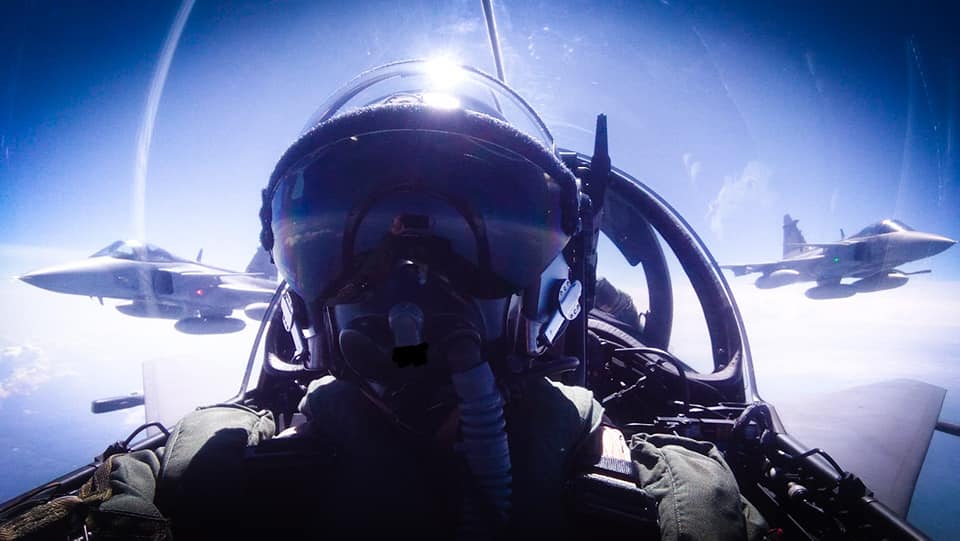
The exercise is the largest of its kind since World War II.Continue reading
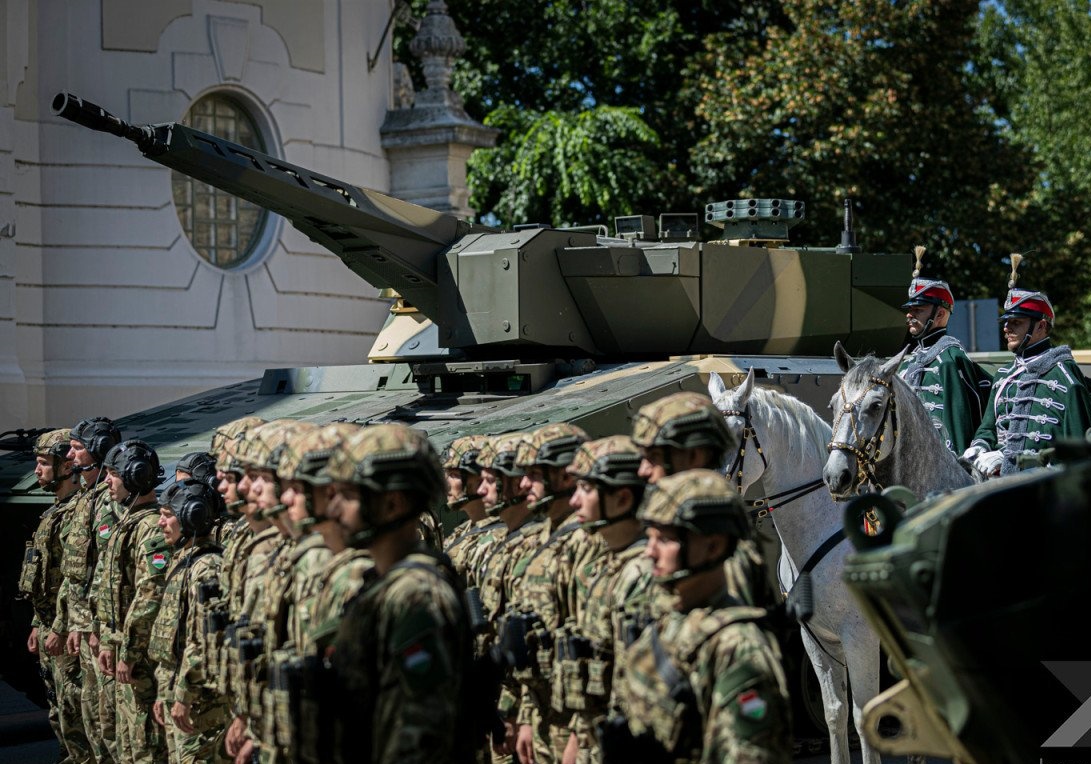
Young people who specifically want to become operators of Lynx armored infantry fighting vehicles, turret gunners or gunners transported into combat with these combat vehicles will receive a gross salary of 737.000 HUF (EUR 1900). This was announced by Defence Minister Kristóf Szalay-Bobrovniczky.

Photo: honvedelem.hu
The aim is to enrich the Hungarian Defense Forces with young people who are capable of handling the Lynx infantry fighting vehicles, an important part of our modern, 21st century, high-performance armed forces.
We must increase our national resilience and continuously develop our military forces. In short, peace requires strength,”
he said. The Defense and Armaments Development Program, which is still ongoing, has now reached the milestone of not only the introduction but also the entry into service of the Lynx armored fighting vehicles.

Lynx KF41. Photo: honvedelem.hu
“We need soldiers to handle our newly arriving modern assets and we can start recruiting for these assets. You could say that we are waiting for a man for the iron”, underlined Kristóf Szalay-Bobrovniczky. It was said that the Hungarian Defense Forces are looking for Lynx drivers, turret gunners and gunners who will be transported into combat with these combat vehicles, who want to be the leading soldiers of the largest proportion of infantry development, i.e. our best soldiers will be together with the cutting-edge technology.
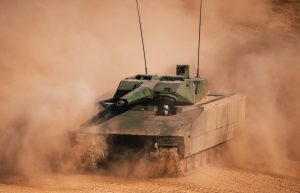
Lynx KF41. Photo: honvedelem.hu
“Of course, the priority assignment comes with a priority salary. I have set a special salary in such a way that the starting salary for the sergeant-major entering the 30th Armored Infantry Brigade of the MH Kinizsi Pál Battalion operating the Lynxes will be 737,000 HUF gross per month. This can be up to 600 thousand forints net for those under 25 years of age. We will also increase the salary of all soldiers – old and new – of the battalion concerned to this level, up to the level of battalion commander,” the Minister announced.

Lynx KF41. Photo: honvedelem.hu
Kristóf Szalay-Bobrovniczky also said that the application process would be “easy, quick and simple”. As he said, those who want to join the infantry brigade will have to apply on iranyasereg.hu, then with the basic personal documents (ID card, address card, tax and social security card, and certificate of primary education) to appear on 11 September in Hódmezővásárhely, at the barracks of the infantry brigade, where after the medical examination, a contract can be signed for a three-year period, and then almost immediately the training will start.
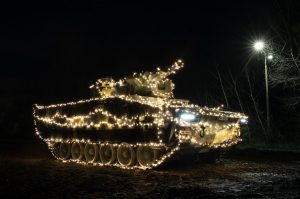
Lynx KF41. Photo: honvedelem.hu
Major General Ferenc Kajári, Deputy Chief of the Defence Staff, described the KF41HU Lynx as one of the world’s most advanced combat vehicles. As he detailed, the armour provides protection against mines and improvised explosive devices. The active armor provides protection against anti-tank weapons. The survivability is enhanced by smoke grenade launchers, and the advanced self-defense system includes laser and radar irradiation warning systems and an acoustic in-fire warning system. The combat vehicle is equipped with advanced day and night surveillance equipment and a high-bandwidth communication system ensures its connectivity. The most important piece of the Lynx’s remarkable main armament is the 30 mm automatic machine gun, which can fire programmable ammunition with a range of up to 3,000 meters. In parallel, a 7.62 millimeter machine gun can also be found on Lynxes. In addition to the main armament, there is a 12.7 millimeter remote-controlled weapons platform, as well as space for armor-piercing missiles on the turret. The 45-tonne vehicle can travel at speeds of up to 65 kilometers per hour and has a range of over 400 kilometers.

Lynx KF41. Photo: honvedelem.hu
“When you add it all up, it is not an exaggeration to say that this combat vehicle is a real star destroyer for the infantry,” said the Deputy Chief of the Hungarian Defense Forces, adding that a total of 218 Lynx will be completed and integrated into the Hungarian Defense Forces system by 2029.
Major General Ferenc Kajári said that the aim is to set up the first battalion of the Hungarian Defense Forces equipped with the Lynx combat vehicle, which will be a truly elite unit, at the end of the special recruitment campaign. “Anyone who feels that they are prepared and ready enough should give it a try, apply, and if they prove their perseverance and ability, they can become a member of this elite corps and participate in building the future. After the eight-week basic training and the military oath, the basic training of the rifle corps will begin. Here, everyone will acquire the knowledge required for the combat vehicle, but only the best will be allowed to join and remain in the corps, because only then will it become an elite corps,” the Major General recalled.
Because one of the Lynx’s main strengths is its modular design, so the basic vehicle, which can carry nine equipped gunners, can be configured to carry a variety of equipment, such as casualty carriers, reconnaissance, air defense or even technical combat vehicles. And this versatility will be needed, as the contract for the procurement of 218 vehicles, signed in September 2020, also indicates that the Lynx, developed with Rheinmetall’s own resources, will be the basic vehicle of the Hungarian Defense Forces for decades to come.
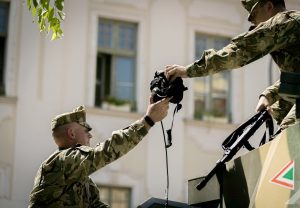
Lynx KF41. Photo: honvedelem.hu
The Hungarian Lynxes are quite large: 8.49 meters long, 3.8 meters wide and 3.73 meters high – but the latter may depend on the turret or other bodywork mounted on the vehicle’s hull. The size is matched by weight: the combat vehicles weigh 45 tonnes for the protection expected in the 21st century. Propulsion is provided by a 6-cylinder, 1463 hp Liebherr D9612 turbodiesel engine coupled to an automatic transmission.
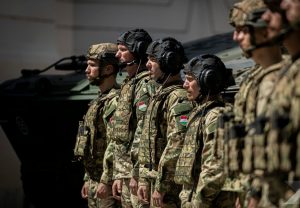
Lynx KF41. Photo: honvedelem.hu
Protection was a key consideration in the design of the Lynx. The frontal armor can withstand the effects of the widely used 30 mm machine gun, while the sides can withstand the effects of 14.5 mm heavy machine gun armor-piercing rounds and 155 mm artillery rounds that explode at least 25 meters away.
The war in Ukraine also demonstrated the threat to combat vehicles from the activities of infantry units using guided anti-tank missiles and rocket-propelled grenades (RPGs). Accordingly, the Hungarian Lynx are now equipped with the StrikeShield active defense system, which can detect missiles and grenades launched against the Lynx and destroy them by launching its own destructive charge from a suitable distance. As the experts know, there is no such thing as an impregnable combat vehicle, but Lynx equipped with modern passive armor and StrikeShield will provide both the troops and the three-man (leader, commander, commander) crew of the transported gunship with a level of protection that is unprecedented not only in Hungary but also worldwide.
Mention should also be made of the ROSY, a rapidly deployable camouflage system: firing 40 mm grenades, it provides a dense, opaque camouflage smoke in 1-2 seconds, even for a moving vehicle.
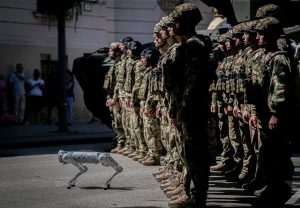
Lynx KF41. Photo: honvedelem.hu
In addition to protection, an infantry fighting vehicle should also have the necessary offensive capability, as its task of supporting its own gunners is just as important as transport. The Lance 2.0 turret is equipped with a MK 30-2/ABM 30 mm machine gun alongside the commander and the commander, which is also capable of firing a programmable, predetermined point detonation of a fragmentation round. This significantly increases the destructive capability against low-flying aerial targets or live forces hiding behind cover. This is complemented by an RMG 7.62 machine gun: the three-barreled weapon uses NATO-standardized 7.62 millimeter ammunition. And the commander can operate the medium or heavy machine gun mounted in the roof-mounted MSSA remote-controlled turret from a protected position inside the vehicle.
According to information available so far, the Hungarian Lynxes’ attack capability against armored targets is enhanced by the use of modern Israeli Rafael Spike LR2 guided anti-tank missiles with increased range. Theoretically, 2-2 of these weapons can be mounted on each side of the turret: the storage unit is only lifted out of the protected position before launch, thus guaranteeing the protection of valuable and vulnerable weapons.

Lynx KF41. Photo: honvedelem.hu
It is also important to see what one is firing at: the driver’s job is supported by daylight and infrared camera systems, so he can see what is around the vehicle. The controller and commander, sitting side by side, can use different versions of the second-generation SEOSS-2 stabilized electro-optical reconnaissance systems during the mission. The “eye” of the vehicle commander is the SEOSS-2P, mounted in the armored hull, which can be moved in a 360° circle and vertically.
This is complemented by the SAS (Situational Awareness System) system integrated into the Lynx, which, as the name suggests, is an integrated capability for the vehicle crew to process all the data and transform it into a single combat picture. It will be supported by SCM 60 camera modules mounted on the vehicle, equipped with both daylight and infrared cameras, which, when properly positioned, will provide full coverage around the Lynx. Protection will be enhanced by an integrated laser irradiation warning system, which will warn of attacks by laser-guided semi-active anti-tank missile systems launched against the vehicle.

The exercise is the largest of its kind since World War II.Continue reading
Via Honvedelem.hu; Featured Photos: Honvedelem.hu
Array
(
[1536x1536] => Array
(
[width] => 1536
[height] => 1536
[crop] =>
)
[2048x2048] => Array
(
[width] => 2048
[height] => 2048
[crop] =>
)
)